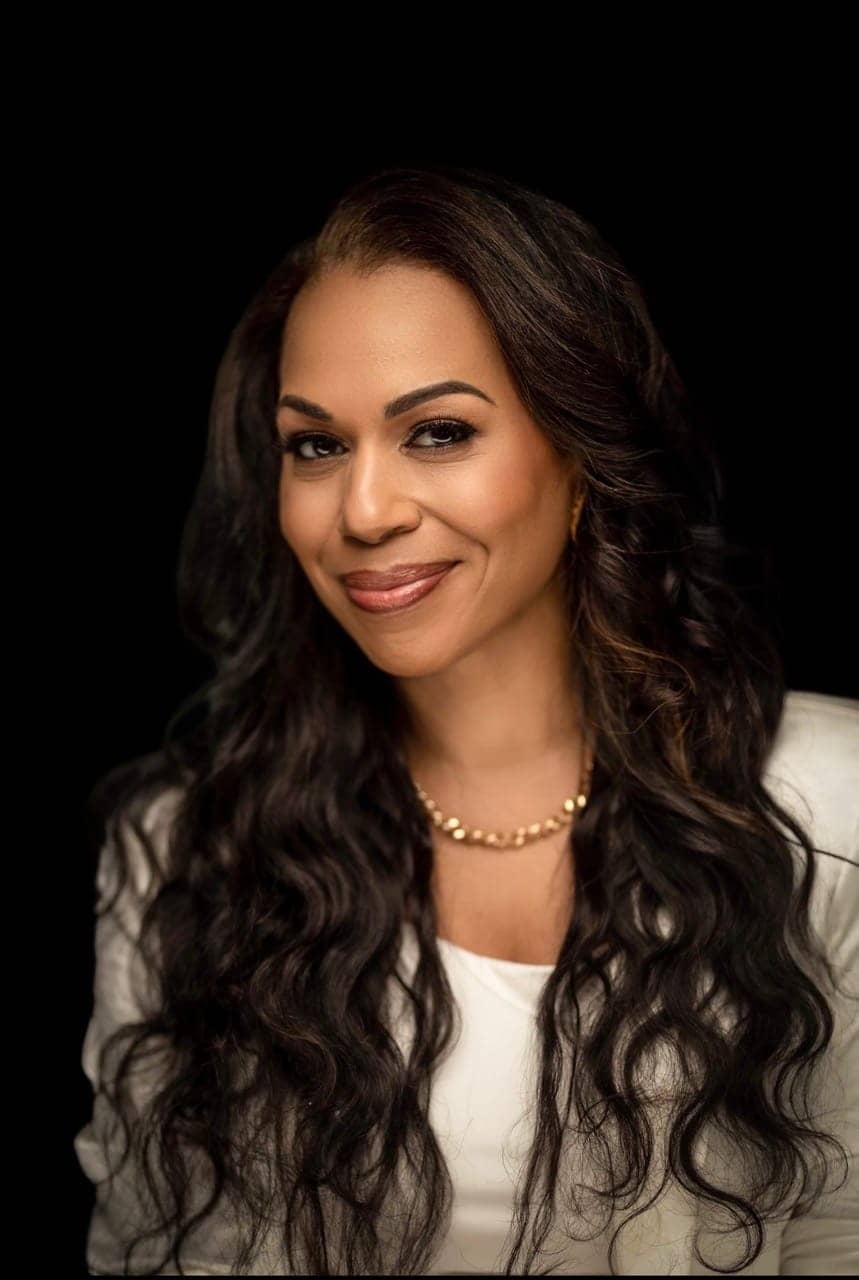
by People’s Minister of Information JR Valrey, Oakland Bureau Chief
Mental health awareness is on the rise in the Bay Area’s Black communities, and that may be a reflection of the fact that the pandemic lockdown was so psychologically devastating to society, especially school aged youth who were still required to attend school via device dependent learning. A lot more people, over the last three years, have had no choice but to admit that they at least needed to talk to a professional about their thoughts and anxiety in this period.
Dr. Danielle Richardson is a Bay Area based Clinical Psychologist who specializes in Trauma, Systems Work, Addiction Medicine, Serious Mental Illness, Forensics, Assessments, and more. In this interview, we discussed how school aged youth were affected by the pandemic’s lockdowns, and the effect it still has on the students’ ability to learn and the teachers’ ability to teach. This is part of an ongoing series of articles looking at how the Covid pandemic lockdowns affected the Black community.
Check out Dr. Danielle Richardson in this exclusive Q&A.
JR Valrey: What are some of the ways in which school-age youth have been affected by the COVID lockdowns and distance learning aka device-dependent at-home learning?
Dr. Danielle Richardson: The COVID-19 pandemic has affected us all, but children and adolescents have especially been impacted. For all youth, the in-person school year in March of 2020 was abruptly ended with an emergency plan urgently needing to be put into place during this unprecedented and uncertain time. This happened within the span of days in some instances. Some children missed matriculation completely from March through the fall, when school resumed.
All systems, including schools, had to scramble and convert their delivery style from a 3D to a 2D format, and there was a major game of catch up that needed to be played as there was no precedence, infrastructure nor safety net. We had never experienced anything like this before. Teachers were already pressured and overworked delivering traditional classes. Now the burden was on them to adjust, and quickly, to this new need.
As we all adjusted, rituals were abandoned and we embarked on a new normal over the next several years. As youth were relegated to their homes, there was a direct impact in several domains including. but not limited to, physical, academic, social, emotional, psychological and technological.
Systems, seemingly not directly tied to education, indirectly impacted the educational experience. School-aged children were disproportionately impacted as this interruption came during important periods of development.
With regard to the physical domain during the early part of the pandemic, children (or anyone for that matter) were often unable to be seen in the clinic setting or have preventative care exams, including eye care, physicals and dental appointments. This could have affected something as simple as being able to read online materials or seek pain relief, which can impact the academic experience.
In terms of the academic domain, the pandemic may have exacerbated challenges on an already-stressed resource. This created additional barriers for students needing specialized assessments in any capacity, from classroom supports or aides, those with special care needs or learning differences and those in rural areas.
As previously mentioned, the delivery of information completely was turned on its head and teachers had to think outside of the box, with limited resources.
Grief was also a factor, as we grieved not only the loss of people, but also our way of life.
Youth mental health was on the rise prior to the pandemic, however. routines including outlets like sports and arts were disrupted and social isolation increased, which can be associated with anxiety and depression and have implications for later life.
It could be argued that youth (along with the entire global population) met the criteria for an Adjustment Disorder, which is a psychological diagnosis. Uncertainty increased the collective’s anxiety, which undoubtedly filtered down to the children from all of the adults in their lives, including parents and teachers.
Children with pervasive childhood diagnoses like Autism, ADHD or Asperger’s also struggled with the changes in structure. For young children, attention spans are shorter and redirection is far more difficult remotely.
Grief was also a factor, as we grieved not only the loss of people, but also our way of life. The impacts of any type of abuse or neglect in the home were also grossly impacted by the pandemic.
At times, many children lacked emotional stimulation, as their parents were overwhelmed attempting to balance the competing priorities of having to work and become teachers – in an instant.
For example, some children who were three years old in 2020 went straight to school for the first time this year. They may display deficits in motor skills, whereas while at home, parents may have done more tasks for them, versus what he or she may have been expected to do independently in preschool. Studies have also shown that the more ACEs (Adverse Childhood Experiences) a child has, the greater need for mental health support.
Additionally, some households did not have internet nor a learning device. Computer literacy was also essential for success and when parents or children didn’t have those skills, for example, being able to access the technology, it resulted in poor performance, negative impact on self esteem, overwhelming stress and even giving up altogether.
JR Valrey: What are some things that you can recommend that districts and teachers could do to overcome the overwhelming mental health crisis that has ensued due to the pandemic and lockdowns?
Dr. Danielle Richardson: One thing many people already knew, and some discovered, is that teachers should always be appreciated and never underrated. Teaching under the best of circumstances can be a stressful, demanding and emotional career. It is also consistently underpaid. Teachers often spend more waking time with children than their parents do and they hold so many stories about each child tucked in their hearts. They are essentially daytime “pseudo parents” and offer so much, from listening, encouraging and least of all, educating. So, shout out to teachers!!
Recommendations for the district/teachers:
1) Ensure a budget for accessible services to those in need by a counselor and/or psychologist and provide networks to make referrals easily. Services can include counseling, testing, social skills training and crisis counseling to students after a traumatic event. Often, the budget is limited in this area, but this proactive step can serve as a crucial resource. Mental health challenges can present with behavioral disruptions, which impact the entire learning environment. The goal is learning, a positive learning experience for all students, as well as teacher retention and burnout prevention.

2) Provide professional development to staff and faculty on how to recognize mental health signs and symptoms. Education not only helps students get resources, but it can also influence the teacher’s perception of a student. The shift from perceiving a student as “disruptive” to “in distress” is huge and can be restorative. Ongoing crisis skills management training is a plus.
3) Adopting a flexible classroom culture for students is important. In this type of classroom, we understand that no one is perfect. Students are expected to work on improving their own behavior through self-regulation and taking opportunities to figure out what they need to make their behaviors better.
4) Provide Wellness Programs for staff and faculty. Oftentimes they are also dealing with their own mental health concerns. This gesture encourages teachers to also have the same discussion around mental health and wellness in the classroom and guards against burnout.
Teachers may be dealing with multiple students with mental health challenges in one classroom. Simple discussions about troubling events at school or in the community can open the door. This normalizes the discussion and subversively encourages it while educating students on the importance of mental health.
5) Ensure budget, put training in place and a task force to tackle commonly reported problems including: how to engage students online, allow for student collaboration, equity and close the digital divide. Also provide training on how to assist in motivating students to engage with the lesson plans that teachers develop for distance learning.
JR Valrey: Many teachers are complaining about how returning students have more of a problem paying attention now than before the lockdowns. Can you explain what is happening?
Dr. Danielle Richardson: There is competing research on the shortening of attention spans out there. It’s too soon to determine if it is solely from the pandemic, or more of a long-term by-product of social media, cell phones and dopamine hits, or something else altogether.
A consideration is that a student might not be paying attention due to having fallen behind and not able to access the information, or taking “mental breaks” due to screen fatigue; but there are numerous other variables and considerations. This all remains to be seen, but I do believe in general we are moving toward instant gratification more and more, which shortens our ability to tolerate things less and less.
JR Valrey: What kind of recommendations would you give to the school districts about how to deal with a future lockdown, in terms of limiting its negative psychological and social impact on students?
Dr. Danielle Richardson: Unfortunately, if we have another lockdown, we will be back to technology and not in person, which is limiting in and of itself. Some suggestions could include building in curriculum or opportunities for recreation that would mimic things like recess or social time during the day for children.
Another option could be to encourage opportunities for assignments or tasks that can be completed outside of the home, with family that are wall-less learning opportunities. Lastly, brainstorming and implementing a plan where past mistakes were learned from.
JR Valrey: What role can parents play in helping students to get re-acclimated to a school setting?
Dr. Danielle Richardson: As a parent, take the opportunity to learn about your child’s school in order to become aware of the school’s health and safety protocol. Provide instruction on handwashing and respiratory etiquette; encourage children to stay home when sick, consider a childcare plan in the event a parent becomes ill; talk to your child’s teacher about their needs; and discuss as a family your vaccination status (to receive or not to receive – no value or judgment either way). Establishing routines, managing parental mental stress, setting realistic goals and addressing children’s mental health concerns are also recommended.
JR Valrey: Who do you work for and what kind of psychology do you specialize in?
Dr. Danielle Richardson: I work for a large Health and Hospital System in the Bay Area. As a Clinical Psychologist, I have a vast range of services and specialties including, but not limited to, Trauma, Systems Work, Addiction Medicine, Serious Mental Illness, Forensics, Assessments, and more.
JR Valrey: How can people get more information on how to access your services?
Dr. Danielle Richardson: My website is under construction. I can be found on TikTok and Instagram @dr_danielle_richardson. There, you can find a linktree to learn more about my assets and offerings. Thank you for the opportunity to share my thoughts!
JR Valrey, The People’s Minister of Information, is the Oakland Bureau Chief for the SF Bay View. He is also the instructor for The Community Journalism Program.





